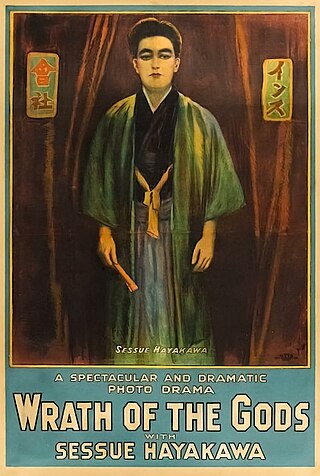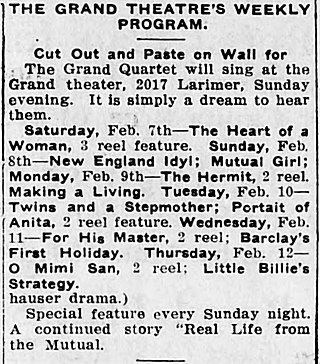Related Research Articles

Kintarō Hayakawa, known professionally as Sessue Hayakawa, was a Japanese actor and a matinée idol. He was a popular star in Hollywood during the silent film era of the 1910s and early 1920s. Hayakawa was the first actor of Asian descent to achieve stardom as a leading man in the United States and Europe. His "broodingly handsome" good looks and typecasting as a sexually dominant villain made him a heartthrob among American women during a time of racial discrimination, and he became one of the first male sex symbols of Hollywood.

Sebastián Vizcaíno (1548–1624) was a Spanish soldier, entrepreneur, explorer, and diplomat whose varied roles took him to New Spain, the Baja California peninsula, the California coast and Asia.
Shōshimin-eiga, literally "petty bourgeois film" or "lower middle class film", is a genre of Japanese realist films which focus on the everyday lives of ordinary or middle class people. An alternate term for the shōshimin-eiga is the pseudo-Japanese word shomin-geki, literally "common people drama", which had been invented by Western film scholars. The term shōshimin-eiga as a definition of a specifically Japanese film genre presumably first appeared in 1932 in articles by critics Yoshio Ikeda and Ichiro Ueno.

The Dragon Painter is a 1919 English language silent romance drama film. It is based on the novel of the same name, written by Mary McNeil Fenollosa. It stars Sessue Hayakawa as a young painter who believes that his fiancée, is a princess who has been captured and turned into a dragon. It was directed by William Worthington and filmed in Yosemite Valley, Yosemite National Park, and in the Japanese Tea Garden in Coronado, California.
The Morning Sun Shines is a 1929 Japanese film directed by Kenji Mizoguchi and Seiichi Ina. Intended as a promotional film for the newspaper Asahi Shimbun, it combines fictional and documentary elements. Only a fragment of the film survives today.

Souls on the Road is a 1921 Japanese silent film directed by Minoru Murata. Film critic Mark Cousins wrote that it was "the first landmark film in Japanese history".

The Wrath of the Gods is a 1914 American silent drama film directed by Reginald Barker and starring Sessue Hayakawa, Tsuru Aoki, Frank Borzage, Thomas Kurihara and Henry Kotani. This was the first feature film appearance of Hayakawa and the directorial debut of Barker.

O Mimi San is a 1914 American short silent drama film directed by Charles Miller, featuring Tsuru Aoki in the title role and Sessue Hayakawa, Kisaburo Kurihara, Chick Morrison and George Osborne in pivotal roles. It was preserved in 1995.
A Relic of Old Japan is a 1914 American silent short drama film directed by Reginald Barker and Thomas H. Ince. Sessue Hayakawa, Tsuru Aoki, Frank Borzage and Henry Kotani played important roles in the film.

Sessue Hayakawa: Silent Cinema and Transnational Stardom is a biography of actor Sessue Hayakawa, written by Daisuke Miyao, assistant professor of film at the University of Oregon, and published by Duke University Press. It won the 2007 Book Award in History from the Association of Asian American Studies and the John Hope Franklin Book Award from Duke University (2007).

Ozu's Anti-Cinema is a 1998 book written by Yoshishige Yoshida, translated into English in 2003, and published by Center for Japanese Studies, University of Michigan. It included analysis and commentary on Yasujirō Ozu's films and film-making techniques.
The Vigil is a 1914 American short silent drama film directed by George Osborne and featuring Tsuru Aoki, Sessue Hayakawa, Thomas Kurihara and Mr. Yamato in prominent roles.

A Heart in Pawn is a 1919 American silent drama film directed by William Worthington. Sessue Hayakawa's Haworth Pictures Corporation produced the film and Worthington played the lead role along with Vola Vale and his wife Tsuru Aoki.

The Gray Horizon is a 1919 American silent drama film directed by William Worthington. Sessue Hayakawa's Haworth Pictures Corporation produced the film and he himself played the lead role. Bertram Grassby, Tsuru Aoki, Eileen Percy, Mary Jane Irving, and Andrew Robson also featured in the film.
Sen Yan's Devotion is a 1924 British drama film directed and written by A.E. Coleby. Sessue Hayakawa, Tsuru Aoki, Fred Raynham, Jeff Barlow and Tom Coventry featured in the film.
Haworth Pictures Corporation was a film studio established by Japanese actor Sessue Hayakawa in March 1918.

The Illustrious Prince is a 1919 American drama film directed by William Worthington and produced by Sessue Hayakawa's Haworth Pictures Corporation.

The Aesthetics of Shadow: Lighting and Japanese Cinema is a 2013 book written by Daisuke Miyao. As the title suggests, the book is based on the cinema of Japan.
Oxford Handbook of Japanese Cinema is a 2010 non-fiction book published by Oxford University Press and edited by Daisuke Miyao.

I Graduated, But... is a 1929 Japanese silent film directed by Yasujirō Ozu. The film is now lost, except for an excerpt of approximately 10 minutes.
References
- ↑ "Daisuke Miyao". University of California, San Diego . Retrieved 3 March 2015.
- ↑ "Daisuke Miyao". University of Oregon. Archived from the original on 25 February 2015. Retrieved 3 March 2015.